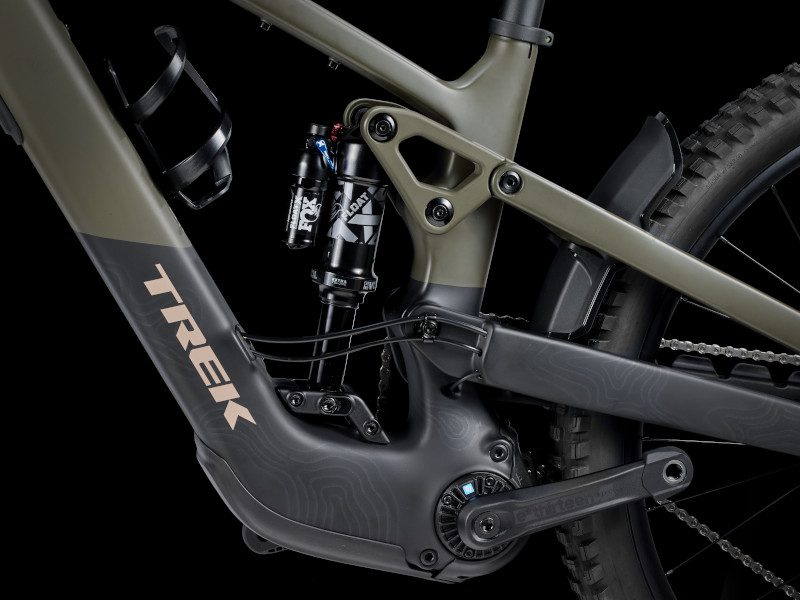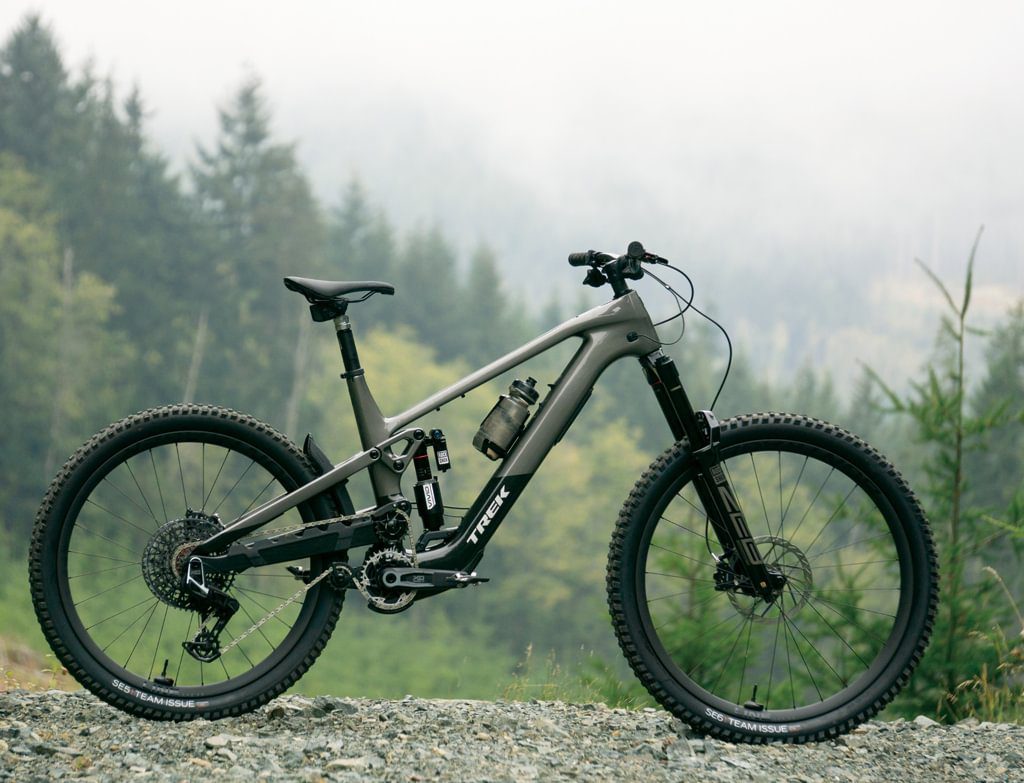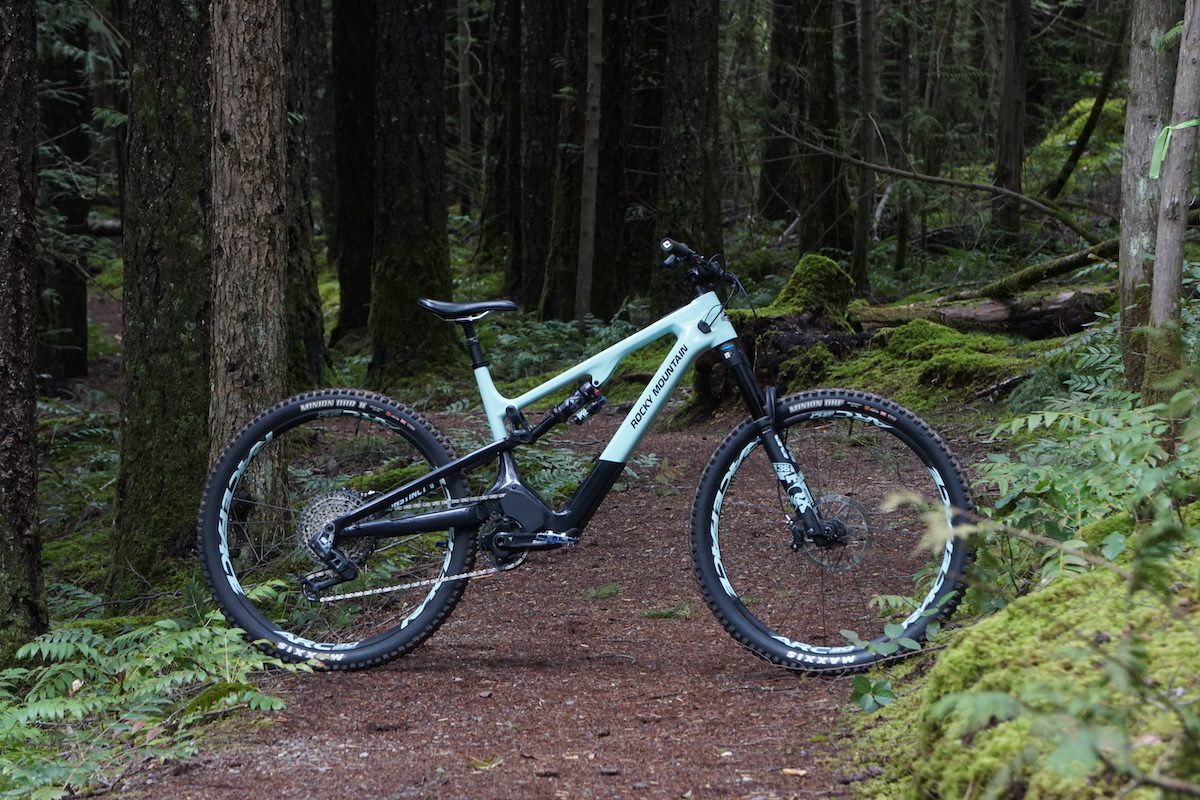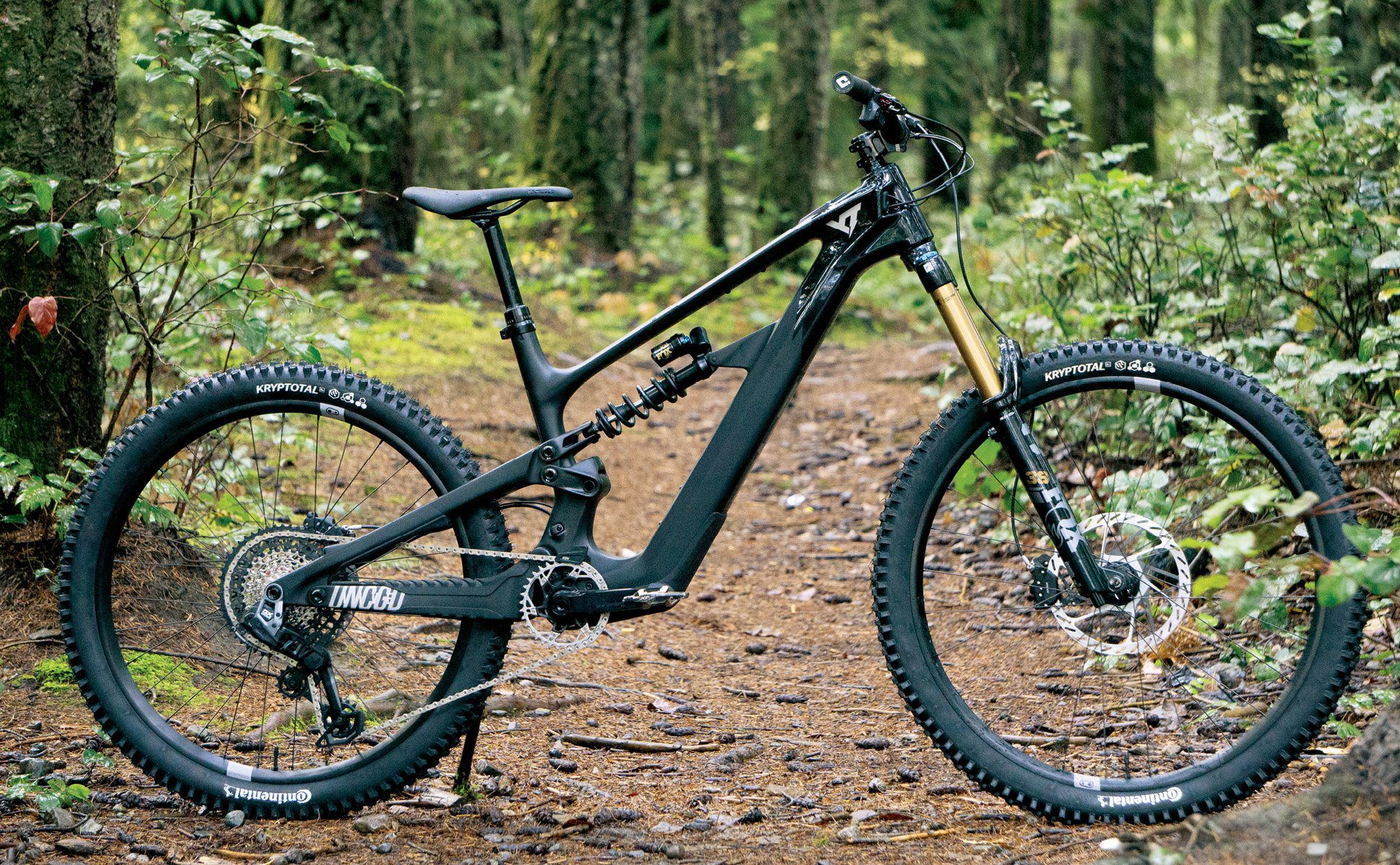Lightweight eMTBs are all about managing compromise. They’re an exercise in finding ways to get something more by giving something up. That is because to get to a lighter overall bike weight, compared to a full-power eMTB, you have to give up power, or battery life or durability. And every brand that makes a light eMTB strikes a different balance between which of those they try preserve and which they are willing to sacrefice.
That means there is a ton of choice for consumers to find an eMTB that fits their personal wants and desires. It’s also just really interesting for us gear nerds to see how brands try strike a balance between weight, durability, power and range, and to try see why.
Here are three quite different approaches to the ligth eMTB category and some thoughts on how each brand’s design decisions impact how the bike rides on trails.
Trek Slash+
Trek helped pioneer the light eMTB cateogry with its Fuel EXe (now called the Fuel+). By using TQ’s compact motor to power a mid-travel trail bike like the Fuel, Trek showed that eMTB don’t have to be just high-powered, long-travel self-shuttle rigs. The 50Nm TQ HPR50 motor and 360Wh battery made a bike light enough to feel like a mountain bike on climbs and rolling trails, not just when pointed downhill.
With the Slash+, Trek again tried to create a new category. It took the high-pivot, mullet-wheeled Slash and added the same HPR50 motor, but with a 580Wh battery. The idea was to get away from the heavy, full power idea of an eMTB and create a bike that was just a bit more than human powered. There’s enough assist and battery to get a second (or third) lap in. But, starting at over 46lbs, a light enough bike that it still felt closer to a Slash than to, say, Trek’s full-powered Rail+ eMTB.
Slash+ in the wild
On the trail, this approach initially left us wondering who exactly this bike was for. It’s not enough to keep up when climbing with friends on full-power eMTBs, and the TQ’s 300W peak power did struggle at lower cadences and when pushing up some of the more heinous access road grades, but it certainly gets you to the top faster than you would under your own power. That makes it great for someone looking to keep up with faster friends on non-electric bikes, or who just wants to get more miles out of their fitness and available time.
The rewards come when pointed downhill, as the Slash+ feels quite a bit like it’s unpowered sibling. The Slash is designed to absolutely eat up and smooth out the roughes trails, making the Slash+ well suited to mimicing that style. Trek’s added more torque to the Slash+ for 2026, upping it from 50Nm to 60Nm, which should address some of the limitations the Slash+ initially faced. Either way, it’s a burly charger that’s wildly capapble on the downhills, if you’re willing to put in a little more effort than you would on a full power eMTB when climbing.
Want to know more? Here’s our full review.
Rocky Mountain Instinct Powerplay SL
The first “light” eMTB from Canada’s Rocky Mountain goes after the all-rounder trail category, but it ends up capable of much more. It has more torque and power than some other light eebs, and even more since a recent firmware update, and a mid-sized battery. The change ups this lite trail beat to 700W peak power with 75 Nm torque. Those big nubmers do rely on the user to restrain themselves slightly, or burn through the 480 Wh battery quickly.
Slightly less travel than some other options, with 145mm rear wheel travel and a 150mm fork, allow Rocky to keep this bike lighter, starting at 43 lbs for the top end model. That’s not the lightest, but it’s also set up trail-ready and durable out of the box with burly tires, alloy rims on the C70 model we reviewed, and solid Fox Performance Elite-series suspension.
The key is Rocky’s new Dyname S4 Lite drive unit, which helps shave weight. It does add a bit of noise compared to the standard Dyname, but careful attention to maintenance can help minimize any auditory feedback on the trail. The feedback from the pedals, on the otherhand, is all good. The fringe benefit of the Dyname system is that it turns the Instinct Powerplay SL into what Rocky calls a “mid-high pivot” bike. It’s not a full-blown high pivot design, like the Slash+, but the Instinct SL does reap some suspension benefits from the way the Dyname motor routes the chain above the chainstay.
Instinct Powerplay SL in the wild
Even before the update, the Instinct Powerplay SL felt like it had more than enough power. The Dyname system delivers power in a reliable and predictable way, even after a couple hours of riding. A range of lower power settings mean you can get quite a few miles, or put in more physical effort, than a full-power system. But Ludicrous mode is enough to get you up nearly any trail you want. Even on smoother surfaces, its almost enough to keep up with higher powered eMTBs, until you get to the steepest sections.
The Powerplay SL’s real power move, though, is its versatility on a wide range of trails. Since it is a light eMTB, and since it still has a ton of power, and since it is modeled after a mid-travel trail bike, it’s much more engaging and fun to ride on a wider range of trails. Where heavy eMTBs and endur0-eebs feel boring or cumbersome, like XC trails and rolling terrain, the Instinct Powerplay SL shines. It’s light and nimble enough to be maneuverable in tight, twisting terrain while the Dyname Lite makes rolling trails feel like extended downhill chases. The Powerplay SL is also one of the few eMTB’s I’ve ridden that didn’t feel like it needed a 27.5″ rear wheel to be nimble enough to have fun, though Rocky does offer a MX link if you want to go that route. Hit the steep stuff, and the Instinct Powerplay SL holds its own. Like most eMTB, it’s added weight helps it track true and corner on rails. It might not keep up with proper enduro rigs, but it’ll keep them in sight, and then drop them on the hills.
Here’s our full review of the Rocky Mountain Instinct Powerplay SL.
YT’s Decoy SN, a light version of its full-power Decoy eMTB, prioritizes power, travel and weight over excessive range. Well, YT calls it a “mid-power” version of the Decoy. Either way, this gives it a ride quality that feels close to the Capra enduro bike than to the Decoy. Fazua delivers 60Nm of torque, but with a solid 450W peak power. A “Boost” mode delivers a pre-set burst of higher power so you can get up short steep sections and quick climbs without playing around with the controls too much, or burning though too much of hte 430Wh battery.
With MX wheels (YT does offer a dual 29″ version) and 160mm rear wheel travel and 170mm forks, it sits squarely in the enduro category. Unlike Trek, YT opts for more power and shorter range as the way to deliver and e-enduro bike that feels more like a real bike. That mean’s the Decoy SN gets up steeper pitches easier than the Slash+, but still tips the scales a couple pounds lighter than the Trek with similar travel numbers and a less complicated frame design.
Decoy SN in the wild
All those numbers boil down to a simple experience: the Decoy SN is fun to ride. It’s fun to ride on fast, flow trails and jumps. It’s fun to charge into steep tech and rocky sections, knowing the Decoy SN will handle it all smoothly. It’s lighter weight makes it amenable to different uses, with slight tweaks to the suspension. YT offers a wide range of sizes and, as I sat in the overlapping zone between two sizes, I was able to choose between a shorter, more nimble frame and a longer, more stable, more race-y fit. While the latter was more fun on steeper and faster trails, I ended up on the smaller size and enjoyed riding a wider range of trails. The battery doesn’t last forever but its definitely enough for very solid rides, even using the higher power settings liberally.
Read more about our time on the YT Decoy SN.




